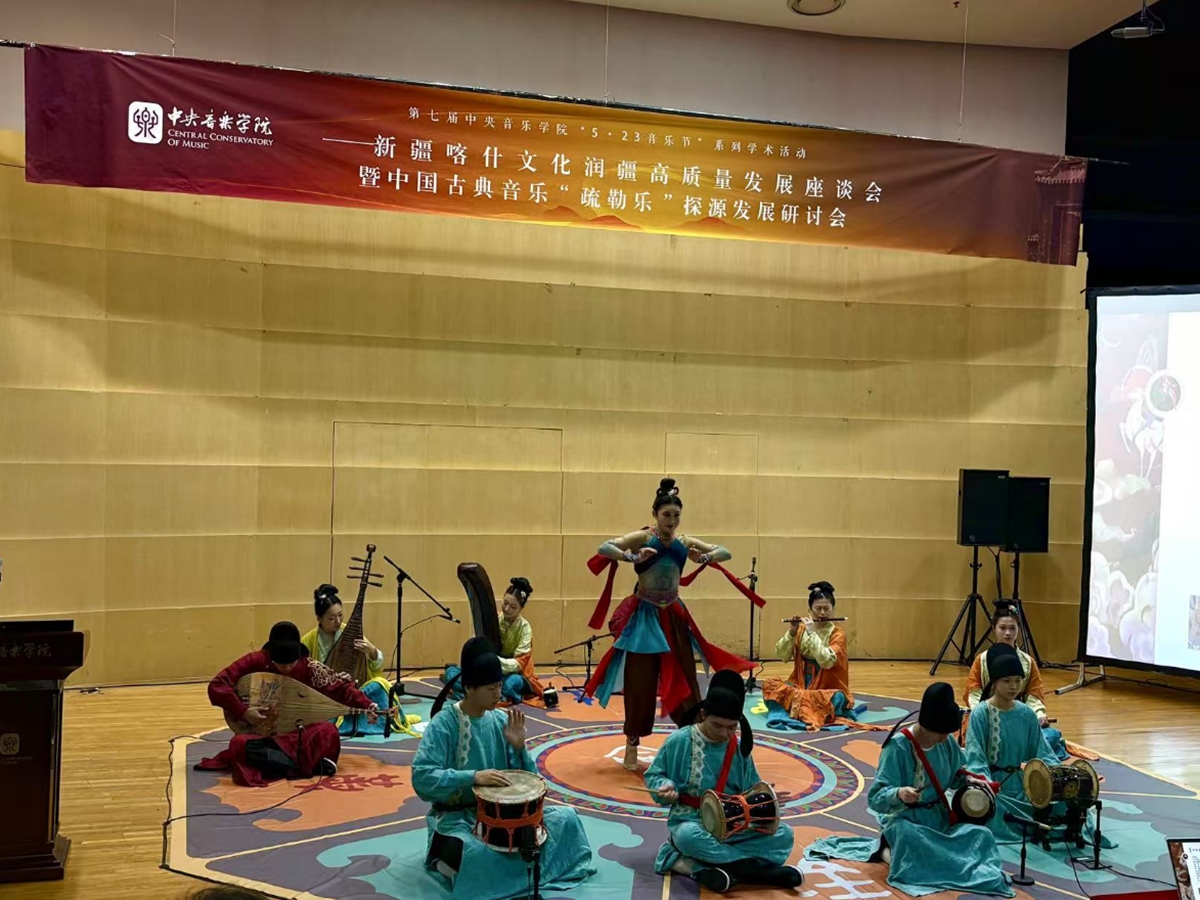Revival of ‘Shule music and dance’ focus of CCOM seminar
From:Global TimesAuthor: 2025-06-19 14:48

Photo: Li Hang/GT
A seminar on the origins and development of Chinese classic Shule music and dance was held at the Central Conservatory of Music (CCOM) in Beijing on Sunday. Scholars, artists, educators and others from China and abroad gathered to explore the historical origins, artistic value, and modern revival of this ancient music and dance that dates back more than 2,000 years.
"Shule music and dance" originated in the ancient Shule region, modern-day Kashi and its surrounding regions in today's Northwest China's Xinjiang Uygur Autonomous Region, around the 2nd century BC. The music form flourished during the Sui and Tang dynasties (581-907) and was notably part of grand Tang-era court performances. A unique fusion of cultures, Shule music and dance integrated musical and cultural influences from the Central Plains in China, India, and Persia, according to a press release from CCOM.
"It is an important heritage of cultural exchange, interaction, and integration between world civilizations and China's multiethnic culture, with deep historical roots and unique artistic charm," An Ping, the project's artistic director, composer and a professor at the CCOM, told the Global Times.
Live performances at the seminar featured reconstructed Shule music and dance routines, complete with historically inspired clothing and replicas of ancient instruments. Audience members were treated to a blend of reconstructed sounds and visual artistry intended to recreate the immersive atmosphere of ancient performances.
Reconstructing Shule music and dance has proven challenging, according to An, a key member of the revival team. "One of the most difficult parts of the process is finding accurate historical references," he said.
The team consulted classical literature, archaeological findings, and visited Xinjiang to research surviving musical traces. In some cases, they even acquired related materials from abroad.
While staying rooted in historical authenticity, the revival team also sought modern resonance. Performers wore clothing inspired by Dunhuang murals but updated with brighter colors and enhanced designs.
In addition, cutting-edge technology such as extended reality (XR) was integrated into the stage production.
"These innovations aimed to deepen the audience's immersion, enabling them to feel as though they were transported back in time to witness ancient court performances," said An.
Beyond artistic reconstruction, the seminar also delved into the sociopolitical relevance of Shule music and dance. Speakers emphasized its role in strengthening national identity.
"Shule music and dance is not merely music. It reflects the fusion of diverse peoples and ethnicities and helps reinforce the sense of community for the Chinese nation," An noted.
Looking forward, local authorities in Kashi are working to establish Shule music and dance as a signature cultural and artistic brand unique to the region. Additionally, plans are underway to create a dedicated Shule music and dance performance palace.
As the first Chinese classical music and dance project with a fully restored singing and dancing ensemble, the Shule music and dance project is expected to serve as a model for future Chinese music heritage initiatives, according to An.
An, who is also the lead expert of the Construction of Chinese Classical Music System, noted that the Shule music and dance is "a pioneering case in the development of the Chinese classical music system."
"Today's academic discussions also have to lead to real-world implementation," Li Youping, a professor at CCOM, told the Global Times.
"We need to bring traditional culture like Shule music and dance into schools, cultivate the next generation of musicians and scholars, and contribute to national cultural development."
International voices at the seminar echoed the importance of storytelling and audience engagement when promoting traditional Chinese music globally. Han Mei, a musicologist and founding director of the Center for Chinese Music and Culture at Middle Tennessee State University in the US, emphasized the need for localization.
"Each audience is different, so we must adapt how we present traditional music to international audiences. And we have to tell the stories behind each instrument, each melody," she told the Global Times.
Edit:董麗娜
The copyright of the article and the picture belongs to the original author. If there is any infringement, please contact to delete it